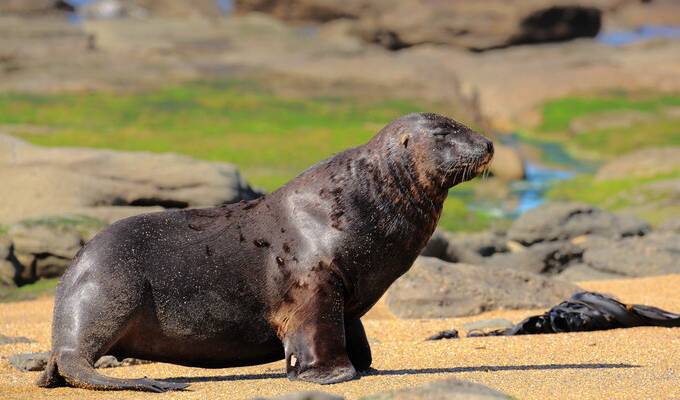New Zealand sea lion
IUCN
LCBasic Information
Scientific classification
- name:New Zealand sea lion
- Scientific Name:Phocarctos hookeri
- Outline:Carnivora
- Family:S.L.family
Vital signs
- length:2-3.5m
- Weight:230-410kg
- lifetime:No verification information
Feature
It is a local species and the largest sea lion in the area.
Distribution and Habitat
It is distributed in the subantarctic islands of New Zealand, breeding in the Auckland Islands, Enderberma and Snares Islands between 48° and 53° south latitude, as far south as Campbell Island, and occasionally seen on Maquarie Island.
Appearance
The front quarter of the body is very strong. The male skull is 346mm long, the width between the temporal and mastoid processes is 181mm, and the female skull is 126mm long. The difference from the Australian sea lion is that the bulla extends backwards, the palatine bone is deeply concave, and the zygomatic postorbital process is very obvious, which is almost absent in the Australian sea lion. The young are covered with dark brown thick fur, the adult female is light yellow to milky gray, and the male is light dark brown with a well-developed black mane.
Details
The scientific name of New Zealand sea lion is Phocarctos hookeri, also known as Hooker's sea lion. It feeds on small fish such as octopus and flounder, and also eats crabs and penguins. It likes to live in groups. It gives birth in late December or early January. The birthing process is short, about 10 minutes, and the lactation period is about 1 year. It will mate on the shore soon after giving birth, with one male and multiple males, and one male and about 12 females form a reproductive group. It does not migrate over a large area. It is estimated that there are 10,000 to 50,000.

Protect wild animals and eliminate game.
Maintaining ecological balance is everyone's responsibility!








